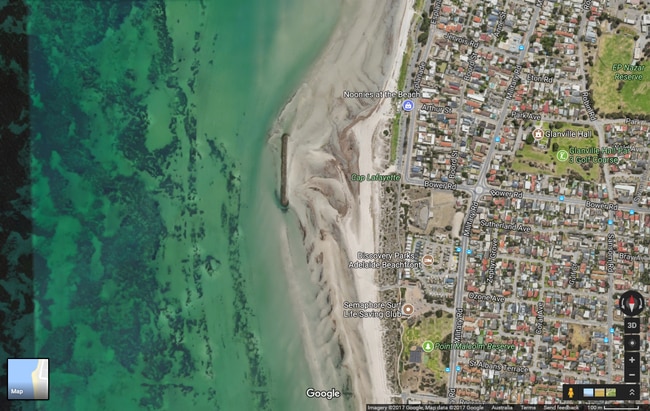Study looking to slow erosion at West Beach examines options to trap drifting sand
AN offshore breakwater, groyne walls and an extension of a rock wall are all options to save the sand on an ailing Adelaide beach.
West & Beaches
Don't miss out on the headlines from West & Beaches. Followed categories will be added to My News.
- Record amount of sand to fill West Beach to protect it from winter storms
- Hundreds of giant sandbags to be installed to prevent sand drift
- Expert says key Adelaide beaches could disappear within a decade
- Cost to rebuild storm-damaged West Beach rock wall doubles
A SEMAPHORE Park-style offshore breakwater, groyne walls extending out from the beach and an extension of the Adelaide Shores boat harbour rock wall have all been examined as part of an independent study into how to slow down sand erosion at West Beach.
Last Tuesday coastal engineers DHI presented the findings of a report to interested parties including Charles Sturt Council, the State Government, West Beach Surf Life Saving Club, the Western Adelaide Coastal Residents Association, Adelaide Shores and the Save West Beach Sand action group.
Save West Beach Sand member John Dundon, WACRA president Jim Douglas and Charles Sturt chief executive Paul Sutton all came away from the meeting confident progress was finally being made on a plan to save the beach.
“I was impressed with the presentation by DHI and it is good to see Charles Sturt doing the right thing to ensure the longevity of their beach,” Mr Dundon said.
Mr Douglas also gave credit to the council and said “things are heading in the right direction”.
Charles Sturt chief executive Paul Sutton said the workshop was positive and included suggestions and discussions for the best solutions to re-establish sand cover at West Beach.
It is understood the discussions included the options of a breakwater similar to one at Semaphore Park, groyne walls extending out from the beach and an extension of the Adelaide Shores boat harbour rock wall to help slow down the movement of sand northward.

At Semaphore Park, a trial sandbag breakwater was built in 2004.
The trial proved successful at trapping sand and the breakwater was reinforced with heavy rocks in 2009.
This area provides a source of sand for trucking to beaches further south, including West Beach.
Data presented by DHI – a not for profit Dutch-based research association – showed 40,000 cubic metres of sand from West Beach was moving to Henley Beach each year as part of the annual drift of 100,000 cubic metres of sand along metropolitan beaches.
A State Environment Department spokeswoman said DHI’s modelling had shown “natural processes” contributed to the sand movement.
“This will be investigated further as part of the modelling program, as will possible future coastal management options briefly discussed at this workshop.”
It was the second meeting of the parties following a workshop in September where they resolved to form a “united front” to restore the beach.

DHI will now continue with its modelling program at West Beach and investigate the options discussed at the workshop.
The $70,000 study is a joint project commissioned by the State Government, Charles Sturt and Adelaide Shores.
More than 60,000 cubic metres of sand, a record amount, was dumped on West Beach in May and June this year to protect it for winter.
A department spokeswoman confirmed the beach replenishment program has been completed for the year and no more sand would be moved.



